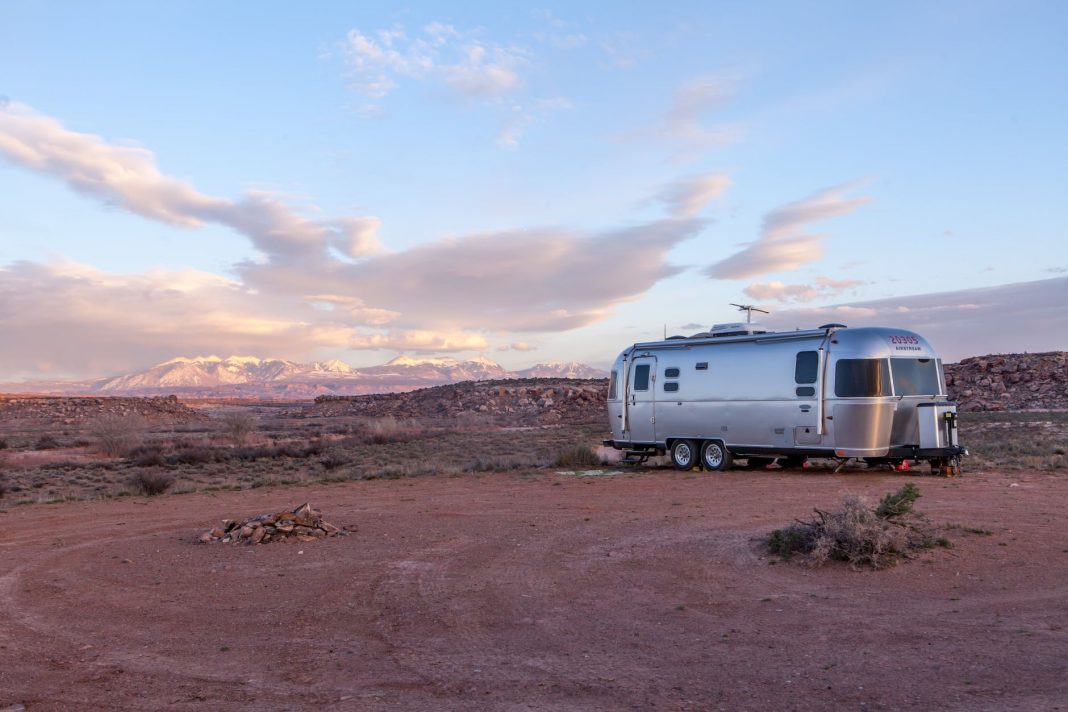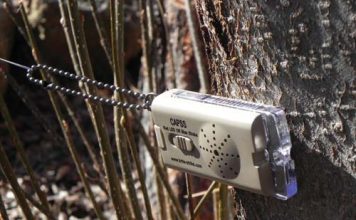 |
|
| Issue #109 • January/February, 2008 |
In Part I of this article in the November/December 2007 issue, I described the many uses for a solar power system that could be made totally portable. If you took up the challenge to build your own version of this solar project, your assignment was to find an enclosed utility trailer to serve as the basis for your own portable power system.
In this issue, I am going to describe in more detail the electrical components you will need, and how to wire everything together.
Batteries
The force behind any off-grid or portable solar-power system is the battery bank. Since this system is portable, the number of batteries your system can use will be limited by battery weight and proper weight distribution on the tires of the trailer. Due to the daily charge and discharge cycling any solar battery will experience, you cannot use lightweight automotive-type batteries which will fail in a matter of weeks.
For small residential-size photovoltaic systems, there are several reasonably-priced battery types that have the heavy construction required for this daily deep-discharge cycling. The T-105 (6 volt golf-cart battery) is an excellent choice since it is usually available locally. Its 62 pound weight and 7″ x 11″ base x 12″ height should allow 8-16 batteries this size to fit into the trailer we are using.
|
For system sizing purposes, this battery will store about 1 kWh of useful electrical power during a normal charge/discharge cycle. For example, if your system will have eight of these batteries, you could power a 1,000 watt load for eight hours, or a 2,000 watt load for four hours, assuming the inverter and other electrical components are properly sized.
This smaller T-105 golf-cart battery is also available as a sealed gel battery that is spill-proof and does not require any periodic maintenance. Since there is no liquid form of acid being used, this is a real advantage for portable applications, but will add 40-50% to the battery cost without gaining any additional charge capacity or life.
The L-16 size battery I used for the solar power trailer shown in these photos has a 7″ x 12″ base x 17″ height, and weighs 128 pounds. Unless your trailer has dual axles, it is doubtful you will be able to use more than eight of these L-16 size batteries without serious weight distribution problems. The L-16 size solar battery will store about 2 kWh of useful electrical power, and its heavier construction provides a useful life in the 6-8-year range. This is three times the life expectancy of the smaller T-105 golf-cart battery.
Unfortunately, the L-16 battery also costs three times the price of the T-105 golf-cart battery, and is only available from industrial battery-distribution centers. This means you may have a problem finding a local battery distributor that stocks this larger battery, which was originally designed for battery-powered floor scrubbers.
You will need to decide early on which size battery you will be using and how many will be installed before the other power-system components can be determined. You will want to use an even number of 6 volt batteries since all residential-size power inverters have a 12, 24, or 48 volt DC input. This means a 48 volt inverter will be connected to a single “string” of eight batteries in series (8×6=48). A 24 volt inverter could be connected to a single-string of four batteries (4×6=24), or two parallel strings of four batteries each for double this capacity.
Inverter
Unless your system will be very small, it is doubtful you will find a 12 volt DC inverter with the capacity to power more than 1,000 watts of electrical load, regardless of battery size. You should have an inverter with a
2 kW or higher load capacity, so your solar power trailer will be using either a 24 or 48 volt DC inverter. Most 24 volt inverters will have a 120 volt AC output capacity in the
|
2-3 kW range, which will easily power a well pump, microwave oven, small power tools, and most lights and kitchen appliances. I selected a 24 volt DC OutBack inverter since the DC refrigerator I installed in the trailer was not available in a 48 volt model, and both are connected to the same 24 volt DC battery bank.
Inverters for 48 volt battery systems will have output capacities in the higher 3.5-5.5 kW range. In addition, regardless of the electrical loads being supplied, a 48 volt inverter will draw exactly half the current from the batteries that a 24 volt inverter draws. This means you will be able to utilize smaller battery-to-inverter cables when using a higher voltage 48 volt DC battery bank.
Inverters are available in “modified sinewave” and “pure sinewave” versions. A modified sinewave inverter produces 120-volt AC power using a voltage waveform that increases and decreases in several small steps to simulate the utility grid’s smoother sinewave-shaped voltage profile. If the waveform output of the inverter is not exactly 60 cycles-per-second, clocks will speed up or slow down, and sensitive electronic appliances can be damaged. However, power tools, lights, and most computers will usually operate without any problems on a modified sinewave inverter. Photocopiers, fax machines, and light dimmers usually have serious problems when connected to a modified sinewave inverter, so be careful what loads you supply.
A pure sinewave inverter costs significantly more than a modified sinewave inverter with the same capacity, but you will be able to operate almost any 120 VAC device on this inverter. The power output from a pure sinewave inverter is actually cleaner and more stable than the power supplied by most utility grids.
I recommend using the Xantrex DR series inverter if you want a quality modified sinewave inverter, and either the Xantrex SW or Outback FX sinewave inverter for more demanding applications requiring grid-quality power. All are available in several kW sizes.
Solar array
Solar modules can be wired in series, parallel, or series-parallel arrangements to match the battery voltage you are using. Solar modules under 100 watts in size usually have a 17 volt DC output under load, but are still referred to as “12 volt” modules. This is because the voltage output of any solar module must be higher than the voltage of the battery it is trying to charge or no charging current will flow. This was found to be the ideal charging voltage for the early solar charging systems first used with 12 volt batteries.
Solar modules over 100 watts in size have a 34 volt DC output under load, but are referred to as a “24 volt” module for the same reason. My trailer’s solar array uses two pairs of 24 volt modules wired in series to produce a 48 volts output.
|
The actual number and size of solar modules you will be using will be determined by the size and shape of the trailer you have and by your project budget. Solar array selection and mounting was discussed in more detail in Part I of this article.
Array combiner box
I recommend using an exterior-mounted array combiner box between the solar array and the solar charge-controller. The combiner box is a wiring junction box with multiple DC circuit breakers or fuses and terminal blocks. This makes it easy to connect and disconnect multiple individual strings of solar modules for testing and servicing while requiring only one pair of wires connected to the charge controller located inside. You can also make your own array combiner using a rainproof junction box, but be sure to use only DC rated fuses or circuit breakers. The Square D “QO” line of 120 VAC circuit breakers are also UL listed for 12 and 24 volt DC service, but this is the only residential AC product line I am aware of that has this dual AC and DC rating.
Solar charge controller
Regardless of your solar array and battery bank size, you will need a solar charge controller. The charge controller’s job is to control the battery charging process, and protect the battery from damage due to over-charging.
This device has input terminals for the solar array and output terminals for the battery bank. More expensive charge controllers adjust the charging rate based on battery temperature, and can be programmed for a battery voltage that is different from the solar array voltage, but most solar modules are wired to match the battery voltage.
A maximum power-point tracking (MPPT) charge-controller can be used with a solar array that is at a higher voltage than the batteries. These more expensive charge-controllers constantly adjust the charging voltage and current to maximize battery charging. This puts more solar charge into the batteries than a lower-cost non-MPPT solar charge-controller.
Since I had to stay with a 24 volt battery bank to power the DC refrigerator, I programmed this charge controller to charge a 24 volt battery from the 48 volt solar array.
System wiring
As shown in the wiring diagram, the solar modules are wired to the solar charge controller, which in turn is wired to the battery bank. Notice the DC circuit-breaker safely disconnects on both the solar array side and the battery side of the charge controller.
The inverter has its own separate circuit breaker and wiring connection to the battery bank, which requires size #2/0 or larger cables. This is a very large cable size with special copper lugs crimped on each end. These battery cables should be purchased with the inverter to make sure you have the correct size.

An inverter rated for 48 volt DC will have a battery cable current flow 2.5 times the current load on the 120 VAC side (120/48 = 2.5). This current will be five times the load on the 120 VAC side of a 24 volt DC inverter (120/24 = 5). This means a 15 amp AC load on a 24 volt DC inverter will draw over 75 amps from the battery (15×5=75). Larger motor loads like well pumps and compressors require a very high current during the first few seconds of start-up. This can easily produce a 200 amp battery load which is why the inverter-to-battery cables must be very large and as short as possible.
The inverter battery cables are pre-made in five and ten foot lengths, so your inverter will need to be mounted close to the battery bank. Note the large DC circuit breaker between the battery positive (+) terminal and the inverter positive (+) terminal. Do not use standard AC circuit breakers in DC circuits as they can arc and “weld” shut when trying to switch off these larger current flows. All circuit breakers, fuses, and switches must be rated for DC type service or you will have a very unsafe wiring system.
Since the quality and size of the inverter, batteries, and solar modules will be different for each solar power trailer builder, I am providing only general wiring instructions. You will need to modify this wiring layout if you are using a different battery or array voltage.
Backup generator
I recommend including a small 4,500 watt generator to complete your solar trailer and to have a truly reliable all-weather backup power system for all applications. Unlike your typical emergency generator which must operate continuously, this generator only needs to operate when the batteries are low. When the generator is started, the inverter will automatically switch from inverting mode to battery charging mode, and will charge the batteries as fast as possible. During generator operation, all system loads will be supplied directly from the generator and not the battery bank while it is being re-charged.
The battery charger built into these inverters is much more robust than a typical stand-alone battery charger, as the inverter designers realize you want to minimize generator run time to reduce fuel use and noise. Most retail battery chargers will not charge properly when powered from an emergency generator, while the charger built into most inverters is designed to utilize generator power, which typically have lower-quality voltage regulation. The OutBack inverter I used for this project can recharge this large battery in less than three hours. This allows a quick system re-charge during days of cloudy weather.
System costs and material sources
I am always asked what a solar power system will cost, and I usually answer that this is like asking a NAPA auto-parts dealer what it will cost to build a car. Each system will be different, and some of you may already own the trailer and some of the needed electrical components. You will find that individual solar modules in the 40 to 100 watt size range will cost in the $10 per watt range, while larger solar modules will be priced in the $8 per watt range. The solar array for my trailer has six modules totaling 990 watts and cost $6,500, so you may want to start out with fewer modules at first to keep project costs low and expand your system later.
Expect to pay around $1,100 for a quality modified sinewave inverter, and double this for a pure sinewave inverter. A Xantrex Model C-40 charge-controller will cost $160 and is an excellent controller for this smaller size solar array. Internal jumpers allow using this charge controller for 12, 24, or 48 volt battery systems. The OutBack Model MX60 charge-controller I used cost $650, but it has a higher charging efficiency and many useful charging control features I wanted.
|
The OutBack combiner box shown in Photo #3 cost $150, and the DC circuit breaker box shown in Photo #2 cost $329. You will probably spend another $150 for the inverter battery cables and special cable adapters that will need to be ordered. However, the 120 VAC wiring devices and the 120 VAC circuit breaker panel are very low-cost and can be found at any building supply outlet. The eight L-16 batteries I used cost $2,500 total, but you can spend less than $900 if you substitute the smaller T-105 golf-cart batteries.
Your actual costs can be much less than these costs by using fewer batteries and solar modules, and shopping around for a used trailer. There are solar parts distributors who advertise in this magazine that can provide any of these solar components if you cannot find them locally.
Conclusions
If you are working with a limited budget, you can start with the smaller golf-cart batteries and switch to the larger batteries after these reach the end of their useful life. You should also design your solar-array mounting system to support more solar modules than you start out with, since a solar array is easy to expand later if the support frame is properly designed. A smaller low-cost solar charge controller can also be up-sized later if you add more solar modules in the future. However, I would not skimp on the inverter.
Decide what you want the total system capacity to be and purchase the right inverter to begin with, as it will be very costly to replace an undersized inverter later. Remember, the inverter is the heart and brains of the system, and you will want an inverter model and brand that will provide a stable AC output voltage under all load conditions. Higher quality inverters will also include a digital display that can show system performance, error messages, and other useful system information.
Good luck with your own solar power trailer construction, and let us know how your trailer turned out.
[weaver_widget_area id=’articles_about_yago’ class=’text3′]


















